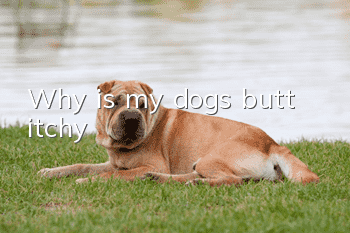How to choose a dog that suits you? Your choice represents its life

How to choose a dog that suits you
(1) If you live in a building and the area is not large, you can choose to raise a small dog.
(2) If you are busy and have no time to take care of it, it is best not to choose a dog with long or curly hair, because it takes a lot of time to comb the dog's coat and bathe it regularly.
(3) Large dogs that like sports may not be suitable as companion dogs for the elderly and children.
(4) Dogs from cold zones such as Huskies and Samoyeds are not suitable to be raised in hot climates.
Tips: The difference between purebred dogs and Chuanchuan dogs:
Purebred dogs are the result of long-term selection and training. They have standard body shape, beautiful appearance, satisfactory temperament and lasting economic value. The choice of purebred dogs must come from reliable people. The best way to buy purebred dogs is It is best to include a pedigree certificate and transfer certificate.
In addition to having no market value or competition value, Xiao Chuanchuan is no less than a purebred dog in terms of companionship. And there is no need for more special care in life, which is more worry-free.
How to choose a healthy dog
Look at the mental outlook
The dog's mental outlook is an important indicator of his health. A healthy dog should be lively, active, and should show curiosity and fear towards new things. And the quality of your spirit is also the first signal to you, which is the most external and intuitive criterion.
Check the condition of the ears
The first thing to do when choosing a puppy is to put it in a stable place, and then use your hands to make sounds on its side or behind its head. If the puppy's reaction is active If it looks in the direction of the sound source, it means that its hearing is normal and there is no obstacle. Then turn its ears outward and check the condition inside the ears. If there is a peculiar smell or sticky attachments, redness, swelling, trauma, bleeding, etc., it indicates that the inner ear is damaged or has ear parasites, which are unhealthy. Performance.
See if your mouth is clean
Oral examination mainly focuses on secretions, teeth, gums, breathing, etc. Healthy dogs have no abnormal secretions in their mouths other than saliva. If they see frothy discharge, they are not healthy. A healthy dog's teeth should be white. If there is any plaque or tooth damage, you may think that your dog's health is a problem, but in reality it is not serious. gums. Your dog's gums should be pink. If the gums are gray, there is a problem with your dog's health. Most of them are internal bleeding, or physical weakness, malnutrition, or congenital anemia, which are also caused by other diseases. tone. Likewise, breathing and teeth are not major issues, but most dogs with bad breath are evidence that their diet is actually unhealthy.
Look at the nose
A dog’s nose is moist in a healthy state (the noses of dogs who have just woken up from sleep are all dry, and so are healthy dogs).
The color of a healthy dog's runny nose is clear and transparent. If it is yellow and thick and accompanied by a cough, it means that the dog has suffered from some kind of respiratory disease, mostly colds and kennel cough. Pneumonia, or the early stage of canine distemper.
When choosing a dog, you can pinch some food with your hand and shake it in front of its nose. If it chases your hand as you shake it, it means that its sense of smell is fine.
Look at the eyes
Dogs and dogs should have clear eyes. Congestion and white film at the corners of the eyes, a large amount of feces in the corners of the eyes, and protruding corners of the eyes are unhealthy symptoms. When choosing, you can place it in a relatively high place and then shake hands in front of it to see how it reacts. If it shows fear and does not dare to jump down, and its eyes follow the shaking of its hands, it indicates that its vision is normal.
Look at the fur
Checking your dog’s skin is mainly to prevent him from skin diseases and surface parasites. Gently separate the dog's hair with your hands. If the color of the skin is light pink, it means the skin is healthy. Pay special attention to the skin around your dog’s mouth, under the neck, behind the ears, under the arms and at the base of the thighs, as these are places where mites can easily grow. If the skin is red in patches or flakes, it means that its skin has been infected with mites or fungi. It is recommended that you do not choose, because this type of disease is very troublesome to treat and can easily relapse. If you find a lot of small black particles in the hair and the skin color is abnormal, it means that it may have fleas. Many dogs have dandruff, which is a symptom of vitamin deficiency and long-term lack of sunlight; or the wrong bath solution is used when taking a bath, so don't be particularly nervous. Many skin diseases emit pungent odors, and a healthy "puppy dog" smell is also an important indicator of skin diseases.
Observe excrement
Dog excrement is also a criterion for the health of the dog. If a dog has diarrhea and very loose stools, it means that there is a problem with its digestive system, or the intestinal flora is damaged. The worst case scenario is that it is infected with canine parvovirus. If you can't see its excrement, you can lift its tail and see if there is any feces stained around the anus. Generally, only the hair around the anus of a dog with diarrhea will have feces stuck to it.
Look at the pace
A dog's normal pace is steady and energetic. If the dog's gait is abnormal, it is mainly because it is too small and has immature muscles and bones. After three months, if the dog's pace is not good, it means he or she has developed injuries in the bones. Some dogs also develop behavioral sequelae from brain damage.
Measure body temperature
38~39 degrees is the normal range.
Observe the foot pads
Adult dog's footpads are plump and firm; dogs' footpads are softer and more delicate. If the foot pads are dry and cracked, it indicates malnutrition. If the dog's foot pads are very hard, it may be an early manifestation of canine distemper.
- Why do dogs have hot ears?
- What happens when a golden retriever wakes up and walks lamely? A must-read for novice pet owners!
- When to potty train your dog? Are you ready?
- The best age and precautions for dog neutering
- How to train a greyhound to pinch?
- What kind of dog cannot be bathed temporarily?
- How do golden retrievers avoid heat stroke in summer? Tips for golden retrievers to avoid heatstroke!
- Why do dogs like to lick everywhere? It turns out that dog licking also has different meanings!
- How should an office worker raise a dog?
- What you need to know if you have pets at home: signs of heat stroke and how to prevent it



